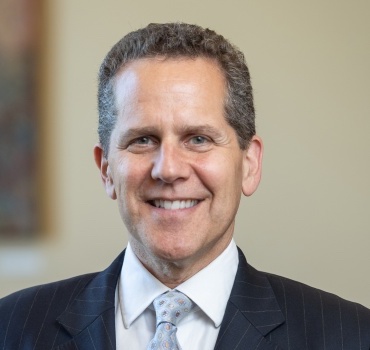
The COVID-19 public health emergency poses unique challenges to financial regulation and future policies.
We are living through extraordinary times as the United States continues to struggle with the global COVID-19 pandemic. None of us knows what the full economic and financial consequences of the pandemic will be. They are likely, however, to persist for an extended period, as many people are unlikely to return to normal work and economic consumption patterns soon, and household and business defaults will likely increase and negatively affect the financial sector. Despite the nation’s prolonged financial setback from the pandemic, five central themes have emerged that could inform future economic policy.
First, as in the 2008 financial crisis, the Federal Reserve seems to have set up its first wave of crisis response programs, seeking to adhere to some undefined line between monetary policy and fiscal policy. This blurred distinction can be seen in the partnership between the Federal Reserve and the U.S. Department of the Treasury. The agencies have created emergency facilities that the Treasury Department funds—effectively taking the first-loss position while permitting the Federal Reserve to lend with a lower risk of loss to a broader range of firms.
Another wave of Federal Reserve programs, including the Main Street Lending Program for businesses and nonprofits, has thrust the Federal Reserve into the unknown territory of lending, albeit indirectly, to companies and others in the real economy. These programs raise questions about the role of a central bank in a modern democracy, bringing to the fore themes posed by Paul Tucker in his book, Unelected Power: The Quest for Legitimacy in Central Banking and the Regulatory State.
But despite the Federal Reserve’s willingness to tread closer to the blurred line between monetary policy and fiscal policy than ever before, there may be limits to what the Federal Reserve considers it can do. As Federal Reserve Chair Jerome Powell has succinctly noted, “the Fed has lending powers, not spending powers.” Powell went on to suggest that additional fiscal support could be “costly, but worth it,” and he noted that the tradeoff is “one for our elected representatives, who wield powers of taxation and spending.” Unfortunately, the U.S. Congress has not yet been able to agree on a new pandemic stimulus package.
Second, Congress and the White House have decided to rely on the Federal Reserve and the banking sector to transmit credit to an economy whose main risk has not been inadequate access to low-cost credit, but rather a severe shock to supply and a fundamental lack of demand because of the global pandemic and the shutdowns.
In addition to the Federal Reserve programs, especially the Main Street Lending Program, the Paycheck Protection Program (PPP)—which is fundamentally a grant disguised as a loan and funneled through the banking system—reveals the White House’s and Congress’s reliance on the banking system. As a policy matter, it is an open question whether direct spending would be more effective in supporting businesses and households.
Third, a global pandemic was not on financial regulators’ list of top threats to the financial system, despite the fact that a global pandemic was on the minds of top epidemiologists. Indeed, recent financial risk modeling was developed by analogy to epidemiological modeling of disease spread, but it did not include disease spread as a risk.
This theme suggests a need for humility about the ability of the Financial Stability Oversight Council, the Office of Financial Research, and the Federal Reserve to forecast systemic financial risk. It also shows the wisdom of building significant capital and liquidity buffers into the banking sector during normal economic times to buttress it against systemic risk during times of stress.
Fourth, the political and societal push for transparency in, and oversight of, the government programs is intense and generally for the good. The post-financial crisis reforms rightly imposed greater transparency on the Federal Reserve programs, and similar reforms were eventually incorporated into the PPP. Much of this transparency and oversight reflects good public policy, even if one questions the immediate feedback loop of press and social media about which companies or nonprofits are deemed deserving of financial assistance and which are not. We have already seen how transparency can lead to course correction, as well as to politicization.
Finally, households’ and businesses’ lack of economic and social financial slack—that is, their low levels of savings and ability to respond financially to changing circumstances—is a source of systemic risk, exposing our society to heightened risks from external shocks. The government has taken steps to help homeowners, consumers, and renters directly in the wake of the virus’s outbreak. As the crisis continues, we will see an even greater need in this area. For the long run, the United States will need to focus on how to increase the income and savings of households and small businesses left vulnerable for far too long.
We remain in the midst of the pandemic, and so it is too early to render final judgment on these themes or whether and how the actions taken by Congress and the financial regulators have worked.
Unlike the financial crisis of 2008, today’s economic crisis is caused by the failure to take sufficient public health actions to contain a global pandemic—not poor financial policy or risk choices in the financial markets. The fact that a public health response failure caused the crisis poses unique problems for economic and financial policymakers in crafting responses. These problems will not be fully solved until the U.S. government has adequately managed the public health risks.





